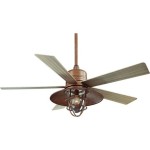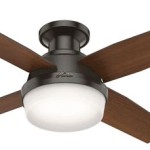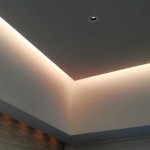Essential Aspects of Ceiling Light Spacing
Effective lighting can transform the ambiance of any room, enhancing both its functionality and aesthetic appeal. One crucial aspect of achieving optimal lighting is understanding and implementing proper ceiling light spacing. Whether you're designing a new space or renovating an existing one, careful consideration of light fixture placement can make a significant impact on the overall outcome.
Determining Light Fixture Spacing
The appropriate spacing between ceiling lights depends on several factors, including the room's size, shape, and purpose. Here are some key considerations to keep in mind:
- Room Size: Larger rooms generally require more light fixtures to ensure adequate illumination. Consider the square footage of the room when determining the number and placement of light fixtures.
- Shape of the Room: Rooms with irregular shapes may require additional fixtures or creative placement to ensure even distribution of light. Pay attention to corners and alcoves that might need dedicated lighting.
- Purpose of the Room: Different rooms have varying lighting needs. For instance, kitchens and bathrooms require brighter light for functional tasks, while living rooms and bedrooms may benefit from a softer, more ambient light.
General Guidelines for Ceiling Light Spacing
While specific requirements may vary, here are some general guidelines to help you determine the ideal spacing for ceiling lights:
- Pendant Lights: For pendant lights or chandeliers, the general rule is to hang them approximately 30-36 inches above the surface they illuminate, such as a dining table or kitchen island.
- Recessed Lights: Recessed lights are versatile and can be used in various applications. For general lighting, a spacing of 4-6 feet between fixtures is common. For accent lighting, place lights closer together, and for task lighting, position them directly above the work surface.
- Track Lighting: Track lighting offers flexibility in placement and direction. The spacing between lights depends on the desired effect. For general lighting, mount fixtures 4-6 feet apart. For accent lighting, place them closer together, and for task lighting, position them directly over the work area.
Additional Considerations for Ceiling Light Spacing
In addition to the general guidelines, here are a few extra factors to consider when planning ceiling light spacing:
- Ceiling Height: Higher ceilings may require additional fixtures or different spacing to ensure adequate light distribution.
- Light Fixture Size: The size of the light fixture can influence the spacing. Larger fixtures may need to be spaced further apart to avoid overwhelming the room, while smaller fixtures can be placed closer together.
- Light Intensity: Consider the brightness of the light bulbs or fixtures you're using. Brighter lights may allow for wider spacing, while dimmer lights may require closer placement.
Conclusion
Effective ceiling light spacing is essential for creating a well-lit and inviting space. By carefully considering room size, shape, purpose, and other factors mentioned above, you can determine the ideal spacing for your ceiling lights. Remember, proper lighting can enhance the functionality and ambiance of any room, making it both practical and visually appealing.

Recessed Lighting Spacing How Many Lights Do I Need Far Apart Place My Jil Sonia Interior Designs

Avoid Strobing Try These Recessed Lights Layouts With Ceiling Fan

Recessed Lighting Spacing How Many Lights Do I Need Far Apart Place My Jil Sonia Interior Designs

Avoid Strobing Try These Recessed Lights Layouts With Ceiling Fan

Free Recessed Lighting Calculator

How Far Apart Do I Place My Pendant Lights In Kitchen Jil Sonia Interior Designs

Arranging Downlights For General Lighting

Avoid Strobing Try These Recessed Lights Layouts With Ceiling Fan

The How To Lighting Guide Lightology

Tips On How To Choose Space Pendant Lights Above A Kitchen Island Design Directions
Related Posts








